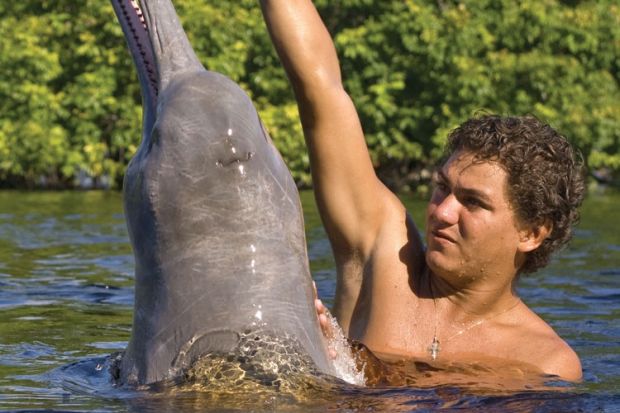Source: Getty
River of life: an environmental report said the project will damage unique habitats
Across the river from the congested metropolis of Manaus, nothing but dense green forest lines the banks of the Negro river in the Brazilian Amazon.
Manaus, the capital of the state of Amazonas and host city to England’s opening match against Italy in the forthcoming Fifa World Cup, is an urban oasis surrounded by more than 5 million sq km of rainforest, the largest expanse of jungle in the world.
But later this year, the Manaus-Iranduba bridge will lead to a new university city across the river in the middle of the forest.
An ambitious project now under way, supported by R300 million (£77 million) in initial funding, will provide a new central campus for the University of the State of Amazonas (UEA), testimony to seemingly unstoppable growth in the region.
Following its creation in 2001 from the vocationally focused University of Technology of Amazonas, the publicly funded university expanded to 57 of the 62 municipalities across the state, reaching some of the remotest parts of the country.
In less than 15 years, it has outgrown its outdated buildings and now requires greater infrastructure for its burgeoning student population.
The new Cidade Universitária (university city) will offer a base for the biggest multi-campus university in Brazil, uniting the current five sites in Manaus. The project will also involve increasing the university’s satellite campuses from a current tally of nine.
But creating a nucleus in the middle of the rainforest brings with it some unique challenges.
“The biggest question is the environmental impact and, above all, the preservation of biodiversity, which is a characteristic of our university,” Cleinaldo de Almeida Costa, rector of the university, told Times Higher Education.
“It’s very delicate from a planning point of view and logistics are very complicated.”
The new campus, plans for which were announced in July 2012 by state governor Omar Aziz, will be home to the university’s academic departments, as well as residential facilities for 2,000 students, a teaching hospital, a technology centre and facilities that will be used as an Olympic Village in 2016.
The massive 13 million sq m site in the city of Iranduba, across the river from Manaus, is within an environmental protection area on the Negro river.
A 5km access road to the site, including a culvert to divert a stream, has already been completed.
But further construction work must carefully navigate the delicate ecosystem of the surrounding Amazon rainforest. The area is home to 52 species of fish, three species of crocodiles and 80 species of birds.
According to an environmental impact study conducted by the Institute of Environmental Protection of Amazonas, “almost all” native fauna will be affected with “irreversible fragmentation” of habitats.
The lecturers’ union at the neighbouring Federal University of Amazonas, a publicly funded institution in Manaus, has criticised plans for the new UEA campus on the grounds of its environmental impact and the projected displacement of almost 400 people living near the site of the new development.
But the Amazonas state government said the master plan had taken account of environmental and geographical concerns, and that the new university city would address problems posed by the region’s challenging geography.
The university has said that timber removed during the roadworks would be used by potteries in the region and vegetation would be reused as fuel for kilns.
“The archaeological review has been done and we have had an environmental impact study so we need to start the period of construction work for the university city,” Dr Costa said.
“The technology we have today allows us to plan and save resources, reuse water, use electricity intelligently and reduce the environmental impact.”
Dr Costa said consolidating the university’s facilities would help to solve the challenges of telecommunications – which are conducted entirely via satellite in Amazonas – and mobility problems linked to the urban sprawl in Manaus.
In addition to the new campus, the university city will include a resort hotel, leisure complexes and tourist attractions, and will be home to a planned 25,000 people.
Meanwhile, another 17 centres in the interior of Amazonas state will be built to serve remote areas, bringing the total number of satellite campuses to 26.
“Above all, what makes us different from universities in Rio and São Paulo is the geography,” Dr Costa said.
“Given that we have 2 million people living in the interior – half our [state’s] population – it’s important to have these nuclei working where we can offer regular courses without students needing to relocate to Manaus.
“Imagine bringing provisions, bringing fuel, bringing all that a city needs to a place 2,000km from Manaus but which is not navigable for part of the year. During the dry season, part of the [region along the] river is totally isolated.”
The new development – including the university’s administrative offices as well as its health sciences, social sciences and technology departments – is scheduled to open later this year.
“The university city’s objective is to resolve [the university’s] problems once and for all, be that urban mobility or space to grow,” Dr Costa said. “A university looking to the future needs to deeply understand and prepare itself to respond to these challenges.”

